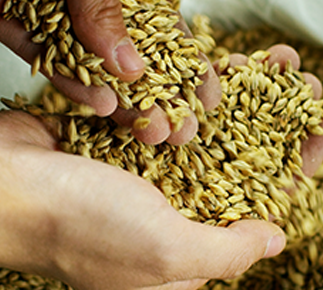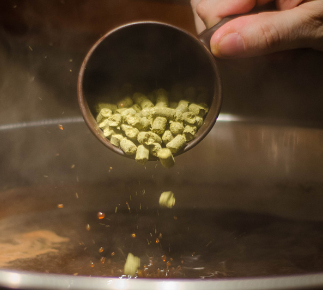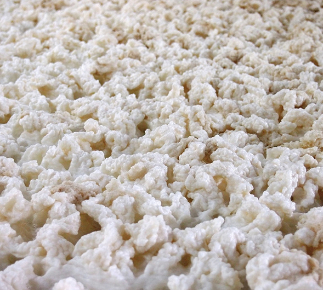Main stars in wine and beer production
The oldest, known to all, alcoholic beverages are wine and beer produced between 5000 and 4000 BC. At that time people didn’t know that the yeasts and lactic acid bacteria are responsible for fermentation and nowadays are actively used in the wine and beer industries as starter culture.
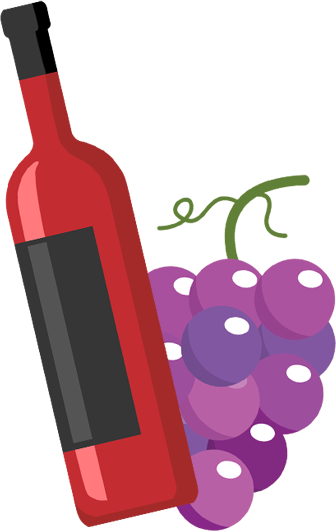



From the vineyard to the glass
Wine is one of the most popular alcoholic beverages obtained by the fermentation of grapes. The English word wine comes from the Proto-Germanic winam, an early borrowing from the Latin vinum. The simplest classification of wine is by color. Therefore, we distinguish between white, red and rosé wines. The wine takes on the color of the grape berries used for its production, so from the green berries, we obtain white wine, from black berries red wine, and with a smaller amount of blackberries, we obtain rosé wine.
Wine science?
Wine science, i.e. the study of the way wine is produced and stored, is called enology, and the person who is an expert in that science is called an enologist. A term often associated with wine is the sommelier, a trained and knowledgeable wine professional who recommends and serves an appropriate wine with a particular type of food.
There are around 10,000 varieties of wine in the world and 400 types of beer. In Croatia, 40 liters of wine and 82 liters of beer are consumed per capita per year.
Who, besides yeast, helps us produce wine?
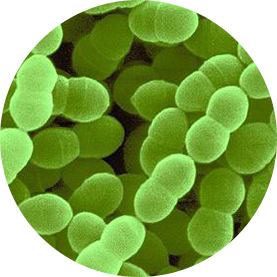

Lactic acid bacteria, as starter cultures, appeared on the market in the early 1980s and were used as a mandatory supplement in wine production. Yeasts play a main role in wine production, followed by starter cultures, i.e. lactic acid bacteria. Lactic acid bacteria in grape juice come from the surface of grapes, leaves, soil and equipment in wineries. Lactic acid bacteria carry out malolactic fermentation in wine, i.e. malic acid is broken down to lactic acid and CO2. Bacteria Oenococcus oeni is most often responsible for this process.
What is malolactic fermentation?
Malolactic fermentation follows after the sugar has been broken down into alcohol and CO2, resulting in additional products including malic acid. Malic acid gives the wine a sour taste, just like eating a sour apple, which is not palatable. Malic acid is found in larger quantities in grapes that grow in colder conditions because the lower temperature favors the formation of more acid. With the help of bacteria Oenococcus oeni, malic acid is converted to lactic acid. Lactic acid has a milder and more pleasant taste and is less acidic than malic acid, which makes the wine taste better.
Therefore, the more active the Oenococcus oeni are, the less sour the wine will be! Besides reducing the acidity of the wine, by the enzyme activity, the bacteria Oenococcus oeni releases aromas that give the wine its specific aroma, taste and color.
The practice of toasting with the shout "Cheers!" has its origins in ancient Rome. Namely, the Romans used this method to make sure that no one wanted to poison anyone (by clanking the glasses into one another, wine could be sloshed from glass to glass). This tradition actually started even earlier in ancient Greece where the host drank the first glass to show his guests that he did not intend to poison them.

In the beginning, was - beer!
Beer is a foamy alcoholic beverage with relatively low alcohol content. The alcohol concentration is lower because less sugar is added than in wine production. While in wine production, grapes are the main source of sugar, in beer production the main source of sugar is malt, in which a smaller ratio of sugar can be broken down to alcohol.
Beer is the third most popular drink in the world, right after water and tea.
The main ingredients in the production of beer are
malt, hops, yeast and water.

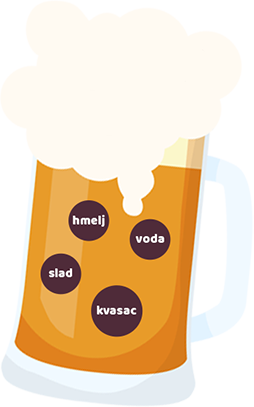
Malt, i.e. barley grains contains complex sugars that, by some procedures, are broken down into simpler ones (glucose), which the yeast will turn into alcohol. The more sugar malt contains, the more alcohol will be produced by yeast.
Hop is the ingredient responsible for the bitterness of the beer. It can be added at the beginning of production to obtain a bitter beer with a more intense taste or it can be added towards the end of production to make the beer more aromatic. Besides the bitterness, the hop gives the beer a special aroma and smell.
Lastly, the ingredient with the highest proportion in beer is water. The water gives a final taste to the beer and retains the bitterness obtained from the hop.
Beer was first mentioned around 3000 BC
Beer was first mentioned around 3000 BC in Mesopotamia as "liquid food" for workers, while in ancient Egypt beer was compared to water. The table shows the composition of beer - since it consists of about 90% water, it is clear why the beer has been so drinkable since ancient times.
| Ingredient: | Share in 100 mL of beer: |
|---|---|
| Water | 93g |
| Carbohydrates | 2,9g |
| Proteins | 0,34g |
| Minerals | 0,09g |
| Vitamins | 0,07g |
| Energy | 39kcal |
So, in one bottle of beer (volume 500 ml), there are about 200 kcal of energy.
From malt to beverage
The effect of yeast
The positive side of adding yeast as starter culture in beer production is to accelerate the start of fermentation after cooking - fermentation begins 5 hours after cooking, and without the addition of starter culture, it begins after 36-40 hours.
If producers use starter cultures during beer production, they will ensure the consistent and uniform quality of beer. So, every bottle of beer made by the same manufacturer will surely have the same taste, aroma and the same amount of foam thanks to the starter cultures! Starter cultures also help additional fermentation, which gives the beer a higher percentage of alcohol, which is exactly what beer should have!





